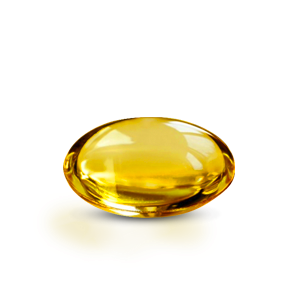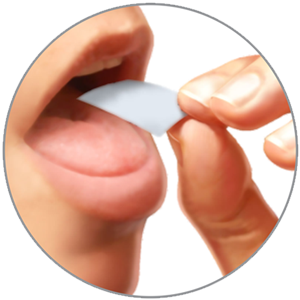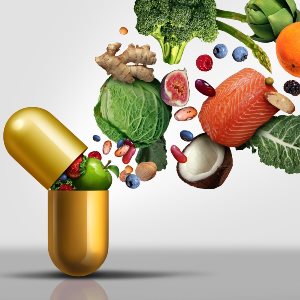
S capsules are a single-unit solid dosage form, consisting of a liquid or semi-solid fill enveloped by a one-piece sealed elastic outer shell. The amount of drug or extract together with adjuvant is enclosed within a globular, oval or other shape of a soft shell. Soft gelatin capsules (Softgel) offer the possibility of delivering a liquid in a solid oral dosage form. The softgel can contain the active ingredient in solution, suspension or emulsion, which will inherently lead to better absorption of the active ingredient as compared with delivery in a tablet or as a powder.
Highly developed soft capsules are currently being applied widely in the pharmaceutical, chemical, food and cosmetic industry. This is attributed to the features of softgels like desirable aesthetic properties and ‘swallowability’, safety enclosure, precise contents, and pleasing appearance. This has enabled their use as an effective delivery system for hydrophobic drugs, low-melting-point drugs, easy-oxidized drugs, and a variety of health care oil.
The softgel delivery system is a unitary package, formed with gelatin outer layers, which contain between them the active ingredients in solution, suspension or paste form. Hydrophobic drugs do not dissolve readily in water, gastric or intestinal fluid. When they are compounded in solid dosage forms, their dissolution rate is usually low and absorption varies resulting in poor bioavailability. Bioavailability of these drugs can be improved in the presence of fatty acids e.g. mono or diglycerides. Fatty acids do solubilize hydrophobic drugs in the gut and enable more rapid absorption.
The softgel delivers drugs in solution and yet offers solid dosage form. These hydrophobic drugs are dissolved in a hydrophilic solvent, which, when crushed or chewed, releases the drug immediately to produce a solution of the drug in gastric juice ready for absorption from the gastrointestinal tract into the blood stream. This results in rapid onset of desired therapeutic effects.
Progress in soft capsule shell materials:
Different types of capsule constitutive materials are usually selected for different products. Apart from the traditional gelatin, in recent years new materials have been explored and their application in the development of capsules is progressing rapidly. In the recent past a number of new sources of raw materials for the gelatin capsule shell have been reported. This range from natural resources like fish to polymers, the fish gelatin has been obtained from fish skin products and formulated as natural hollow capsules of fish oil, spirulina and cellulose. Natural herbal capsules have been reported as concentrated herbal capsules of gold Lippo plant capsules. The polymer material Hydroxyl Propyl Methyl Cellulose (HPMC) have also been explored, the odorless, milky, fibrous or granular powder, from lint or wood pulp, dissolves completely in cold water but is almost insoluble in ethanol and other organic solvents. FDA has highlighted it as a non-active component that can be used for ophthalmic preparations, oral capsules and suspensions. The gelatin made of hypromellose and pullulan displays chemical stability, friability, low moisture content and oxygen absorption rate.
Progress in soft capsules liquid-fill material:
The formulations of capsule fill have been developed to fulfilling specifications and end-use requirements of the product. Capsulation of liquids that are immiscible with water and non- volatile, such as vegetable oils and vitamin E, have been easily made requiring little or no formulation. However, solids which are not sufficiently soluble in liquids are reported to be capsulated as suspensions having a particle size of 80 mesh or finer.
Donato and group (2008) showed that the following types of compounds may not be suitable candidates for soft gel encapsulation:
- Liquids that can easily migrate through the gelatin shell, such as water hygroscopic and volatile compounds. Water soluble compounds that may affect the gelatin shell unless they are minor constituents of a formula or combined with a carrier that reduces their effect on the shell.
- Aldehydes, which have the ability to harden the shell and hence affect its dissolution property.
- Acidic or alkaline solutions should be avoided, unless they are adjusted to become neutral; acids and alkalis can cause hydrolysis and leakage of the gelatin shell.
The soft gelatin capsule as a dosage form:
Improved drug absorption is the primary reason for selection of softgel as a dosage form. Nevertheless as a drug delivery system for oral administration of therapeutic agent several advantages as well as disadvantages have been reported with soft gelatin capsules;
Benefits:
- Increased the rate of absorption of drugs
- Increased bioavailability of drugs
- Decreased variability of plasmatic drugs
- Patient compliance and consumer preference
- Safety for potent and cytotoxic drug
- Dose uniformity of low-dose drugs
- Product stability

Over the past few decades, tendency toward innovative drug delivery systems has almightily increased attempts to ensure efficacy, safety and patient acceptability. As discovery and development of new chemical agents is a complex, expensive and time consuming process, so recent trends are shifting toward designing and developing innovative drug delivery systems for existing drugs. Orally fast dissolving film is the kind of drug delivery system which when placed in the oral cavity, disintegrate or dissolve within a few seconds without the intake of water.
Orally fast-dissolving film is new drug delivery system for the oral delivery of the drugs. Almost 90% of the drugs are administered to the body via oral route for the treatment of various disorders and diseases as it is regarded as the safest, most convenient and most economical method of drug delivery and have the highest patient compliance. The drug is either dissolved or swallowed, which then enters into the systemic circulation to produce the desired effect. Fast dissolving oral thin films is an ultra-thin film that employs a hydrophilic polymer that rapidly hydrates or adheres when placed on the tongue or in the buccal cavity. These films disintegrate or dissolve within seconds to release the active agent without drinking and chewing. The instant bioavailability results from bypassing first pass metabolism. So they are generally designed for the drugs having high first pass metabolism for achieving better bioavailability.
Formulation Considerations:
- Active Pharmaceutical Ingredient: A typical formation of the film contains 1-25% w/w of the drug. Variety of active pharmaceutical ingredients can be delivered through fast dissolving films. Small dose molecules are the best candidates to be incorporated in oral fast dissolving films. Multivitamins up to 10% w/w of dry film weight was absorbed in the films with dissolution time of less than 60 seconds. It is always useful to have micronized active pharmaceutical ingredients which will improve the texture of the film and also for better dissolution and uniformity in the oral fast dissolving films.
- Film-Forming Polymers: Polymers are the most important ingredient of the fast dissolving oral film. Robustness of the film depends on the quantity of polymer added in the oral strip. Generally, 45% w/w of polymer is used which is based on total weight of dry film. The selection of polymer is one of the most important and critical parameters for the successful development of oral films because of their tensile strength which depends upon the type and quantity of polymer used. Mainly hydrophilic polymers are used in the oral strip as they rapidly disintegrate in the oral cavity as they come in contact with saliva. Currently, both natural & synthetic polymers are used for the preparation of fast dissolving film.
- Plasticizers: It is a main ingredient of oral thin films. The plasticizers help to better the mechanical properties of film such as tensile strength and elongation to the film. It also minimizes the brittleness of the film. It may better the flow and enhances the strength of polymer. The proper selection of the plasticizers is very main.
- Surfactants:Surfactants are used as a wetting or solubilizing or dispersing agent so that the film is getting dissolved within seconds and release active agent immediately. Commonly employed are poloxamer 407, benzethonium chloride, sodium lauryl sulfate, tweens, benzalkonium chloride, etc. Out of these most predominantly used surfactants is poloxamer 407.
- Sweetening agents: Sucrose is the most commonly used sweeteners in fast dissolving oral films. Sucrose is very soluble in water and being colorless does not impart any undesirable color to the final formulation. Some of the commonly employed sweeteners are dextrose, sucrose, fructose, glucose, isomaltose, polyhydric alcohols (sorbitol, mannitol), etc. Artificial sweeteners like saccharin, cyclamate, aspartame (first generation), sucralose, alitame and neotame (second generation) can also be used.
- Saliva stimulating agents: Saliva stimulating agents are used to increase the rate of making of saliva that would help in the faster disintegration of the quick dissolving strip formulations. Examples of salivary stimulants are citric acid, malic acid, lactic acid, ascorbic acid and tartaric acid.
- Flavouring agents: Flavours used in the formulation must be non-toxic, soluble, stable and compatible with the excipients. The quantity of flavouring agent required to mask the taste depends on the flavor type and its strength.
- Colouring agents Generally incorporated colouring agents have FD&C approved colours, natural colours, pigments such as titanium dioxide etc. The colouring agents should not exceed concentration levels of 1%w/w.
Benefits:
- Easy transportation
- No need of water for administration
- Oral strip technology provides an alternate route for drugs with first pass metabolism
- Ease of administration of film to the patients suffering from dysphagia, repeated emesis, motion sickness, and mental disorders
- Large surface area provides rapid disintegration and dissolution in the oral cavity

In the 21st century, the interest in natural ingredients-based food supplements, pharmaceuticals, and functional ingredients has amplified. According to the studies of Zhu & Woerdenbag and Choochote et al., the application of phytochemicals derived from herbs and fruits is a potential alternative to synthetic active ingredients to enhance food quality, minimize toxicity, and ensure environmental safety due to the nontoxic biodegradation. It is known that the oral route is the most convenient route for the administration of active ingredients in food supplements, functional food products etc., due to the highest component of compliance mainly being the pediatric and geriatric patients. It is regarded as the most economical and safest method of drug delivery.
However, the development of dosage forms and taste-masking of bitter, salty, or sour bio-actives administered orally, especially if the product has to be suitable for children, are formidable challenges for formulation scientists. According to EMA recommendations, liquid formulations are the most appropriate for patients younger than eight years old. However, the dosage of bio-actives in liquid products is limited due to their solubility and a lot of additives, such as sweeteners, buffers, preservatives etc., must be used to ensure physical, chemical, and microbiological stability and improve the flavor. A more sophisticated formulation approach is gummy bears based on natural materials with incorporated active ingredients. The gummy bears, as is the case for all other chewable food products, are only available for children and adults without a chewing disorder and dysphagia, but can still broaden the consumer market due to the wide list of benefits.
It has been reported that a gummy bear’s base usually consists of the jellifying agent (pectins, modified starch, gelatin etc.) and sugars, where water-soluble ingredients can be dissolved and the insoluble ones are suspended in the viscous matrix. Therefore, the application range of gummies in the pharmaceutical and food industry as a novel drug delivery system, which is more acceptable to children and some adults due to the confectionary appearance and taste, is wide.
In a little while...

Effervescent are tablets which are designed to dissolve in water, and release carbon dioxide. They are products of compression of component ingredients in the form of powders into a dense mass, which is packaged in blister pack, or with a hermetically sealed package with incorporated desiccant in the cap. To use them, they are dropped into water to make a solution. The powdered ingredients are also packaged and sold as effervescent powders or may be granulated and sold as effervescent granules. Generally powdered ingredients are first granularized before being made into tablets.
Effervescent tablets dissolve upon contact with water to release carbon dioxide and create a drink. We design effervescent tablets that have a pleasant taste, even if they contain bitter, sulfuric, sour, metallic, astringent, or difficult-to-process APIs. All our effervescent products dissolve quickly and completely leaving no residues or foam. The composition of our effervescent tablets helps to speed up the absorption of APIs, so they are already dissolved when entering the body. By creating a buffered solution that increases the pH value of the stomach, APIs are then quickly passed to the small intestine. Our effervescent tablets are extremely stable, meaning they are less sensitive to humidity and high temperatures and can be used in tropical regions (climatic zones III- IV).
In a little while...

There's a huge market demand for food supplements in today's health-conscious world – but many consumers find conventional tablets and capsules. Kinegic NutriBits offer a new way to take food supplements and overcome these barriers to a healthier lifestyle.
Over the past few years, an increasing number of dietary supplements have become available in supermarkets and health food shops and they are also available for purchase in pharmacies. Nutraceuticals, which have also been called medical foods, designer foods, phytochemicals, functional foods and nutritional supplements, include such everyday products as “bio” yoghurts and fortified breakfast cereals, as well as vitamins, herbal remedies and even genetically modified foods and supplements. Many different terms and definitions are used in different countries, which can result in confusion.
Kinegic NutriBits are a novel approach to deliver food supplements. Simple, fast and convenient, Kinegic NutriBits help consumers stick to their health resolutions with a daily boost, occasional treat or a pick-me-up. Kinegic NutriBits can contain a wide range of nutrients, from vitamins, minerals and botanicals to superfoods and organic grade ingredients, to meet a wide variety of health needs. They are available in a range of flavors to suit individual tastes and can fulfill special dietary requirements, such as vegan, halal or sugar-free.

